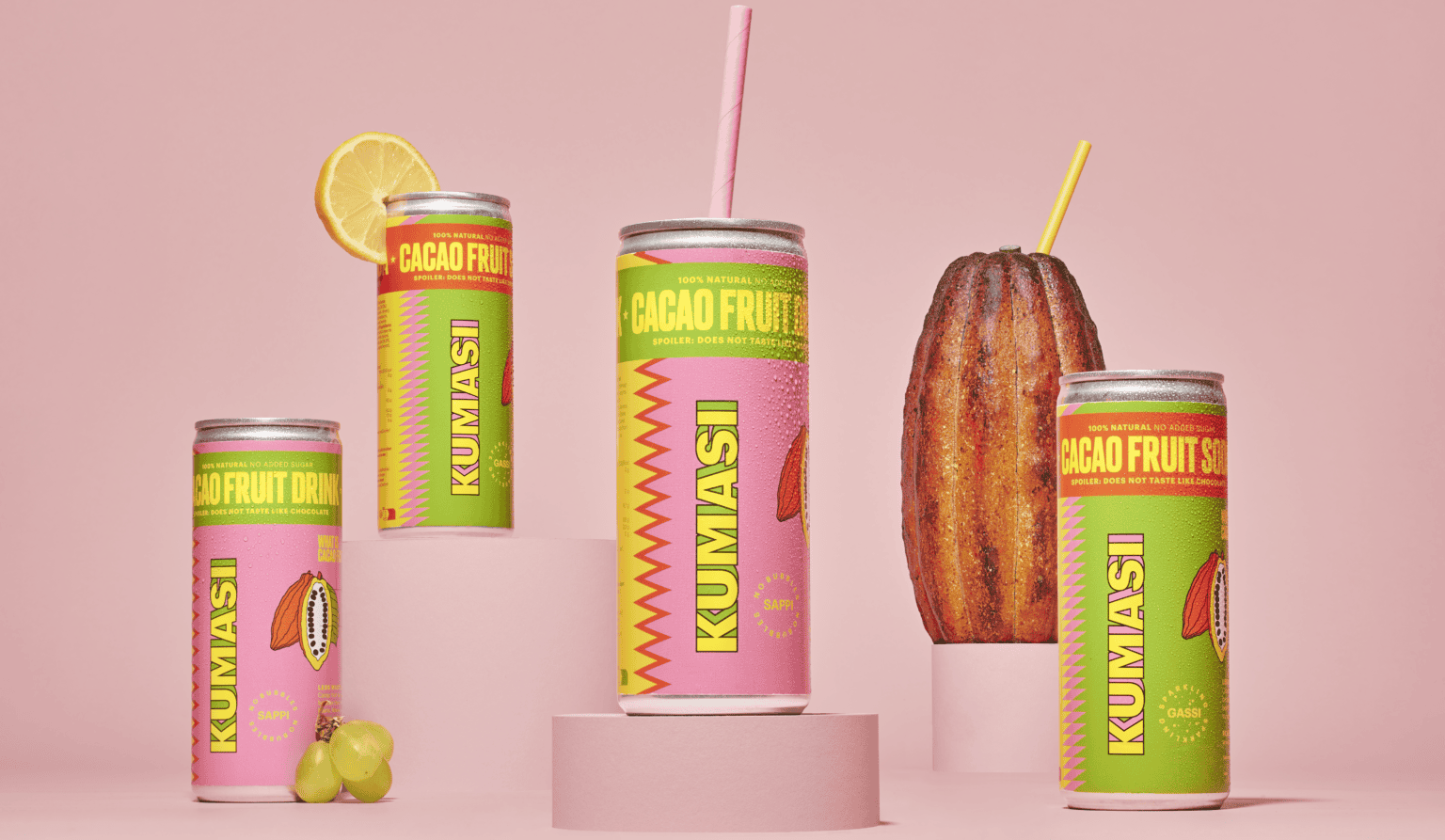It all started with the documentary by Lars Gierveld (co-founder) in 2018. Since 2000, there has been a lot of talk about poverty and child labor in the cocoa industry. The documentary mapped out what one of the largest cocoa producers, Nestlé, had done since then. During this trip through West Africa, Lars tasted the white pulp of the cocoa fruit for the first time. Delicious, but of little value to the local farmers who could only generate income from the beans. Half of the fruit is wasted. "That is why Kumasi was created, we make juices and soft drinks from the pulp. This means extra income for the local farmers," says Linda.
Impactful flagship products
At the moment, Kumasi has two flagship products, the sappi and the gassi. “We generate income with these. However, our main goal is to make consumers aware of the other side of the cocoa fruit. With a can of Kumasi, you can quickly prevent the waste of two fruits. We have already been able to optimally process more than 1.5 million fruits. The cocoa farmers are paid accordingly for this. By selling this pulp, local growers even earn up to 30% more per kilo of cocoa,” says Linda. “Furthermore, by showing the production possibilities of the cocoa fruit, we want to inspire larger brands to start working with the pulp themselves, for example as a filling in chocolate.”
Product development in West Africa
For product development, Kumasi itself is present in West Africa. Linda recently moved to Ivory Coast for this purpose. In the context of food waste, Linda believes that we should also take a critical look at what is happening at the beginning of the supply chain. “Sometimes 3 0-50% is lost here because a product is not stored properly or because we do not know the possibilities of a product. That is why it is crucial to innovate in this area and invest in local start-ups. We ourselves want to expand further locally on the West African market in order to further reduce waste and combat poverty.”

